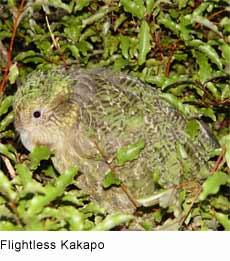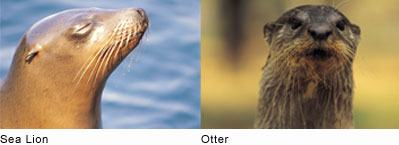|
|
 |
|
Evolutionary theory says that all living species are descendents of earlier species, and that we all share a common ancestor, bananas, praying mantids, orchids, and orangutans alike!
|
|
|
|
Tree of Life: All species on earth are branches on a vast tree of life—the trunk is the common ancestor. Just imagine, we share a common ancestor with our pets, and even the bacteria that make us sick! Scientists continue to debate and amend the “tree of life,” attempting to map the evolution of all life on Earth. So far, most scientists believe that all life on earth sprouts from these three prongs:
Bacteria (“True bacteria,” mitochondria, and chloroplasts)
Eukaryotes (Protists, Plants, Fungi, Animals, etc.)
Archaea (Methanogens, Halophiles, Sulfolobus, and relatives)
Would you believe that humans rest on the same branch as plants and fungi? How did such diverse life as humans, parrots, and flowers evolve from a common ancestor? To learn more about the "Tree of Life," click here!
 Lucky Mutants: The phrase "survival of the fittest" describes the driving force behind all evolution: natural selection. Genetic mutations are occurring all the time, and many are beneficial, enabling an animal to live longer and produce more offspring. Lucky Mutants: The phrase "survival of the fittest" describes the driving force behind all evolution: natural selection. Genetic mutations are occurring all the time, and many are beneficial, enabling an animal to live longer and produce more offspring.
Over time, these lucky mutants will continue to multiply and evolve, while those with disabling mutations will become extinct—nature taps the strongest mutants for survival!
Outside Influence: When the environment changes, life must adapt to new conditions in order to survive, and new species evolve. For example, when parrots first arrived on New Zealand over a million years ago, they adapted to their new environment and evolved into a new species—the flightless Kakapo. Since there were no land mammals  in New Zealand at the time, the parrots lost the ability to fly, seeking food on the ground where few other animals were looking. Since continents are always on the move, environmental changes have played a significant role in animal evolution. Please visit our Pangaea page to learn more about the movement of Earth's continents! in New Zealand at the time, the parrots lost the ability to fly, seeking food on the ground where few other animals were looking. Since continents are always on the move, environmental changes have played a significant role in animal evolution. Please visit our Pangaea page to learn more about the movement of Earth's continents!
Charles Darwin observed that finches on different islands in the Galapagos had evolved distinct beak shapes to suit their local food resources. Scientists have actually witnessed finch evolution first hand, within only 20 years! A group of Galapagos finches evolved smaller beaks, which enabled them to access smaller, tucked away seeds that a competitor finch species could not eat.
|
| 1, 2, 3 Kinds of Evolution: A brief review of a few ways that new species evolve!
Convergent Evolution: Convergent evolution is when two species evolve the same features because they face similar environmental pressures, not because they are closely related. For example, while otters and seals look similar because they both evolved in aquatic environments, not because they are genetically similar. In fact, otters are related to minks, while seals are related to bears!

Co-evolution: Co-evolution is when one two species influence one another’s evolutionary history. For example, flowering plants co-evolved with pollinators like bees and moths. Flowers would not look or smell the same if they had not evolved to attract their insect pollinators. Some orchids actually taylor their shape, color, and scent to one specific pollinator! For example, Bumblebee Orchids look so much like female bumblebees that males approach them to mate.

Adaptive Radiation: Adaptive radiation is when a species quickly adapts to take advantage of the resources in their particular environment. For example, the Galapagos finches developed different beak shapes to access each island’s sources of food.

Please visit our Evolution at Work page for more fascinating examples of animal evolution!
|
Evolution in Conclusion: All evolution, even human evolution, continues and who knows where it will lead us? Humans are a relatively young species. The average “lifespan” of a mammal species is roughly 10 million years, and our species, Homo sapien, is only about 400,000 years old! We’ll just have to wait and see what happens… and wonder, “what would Darwin think?”
|

|
|
|
